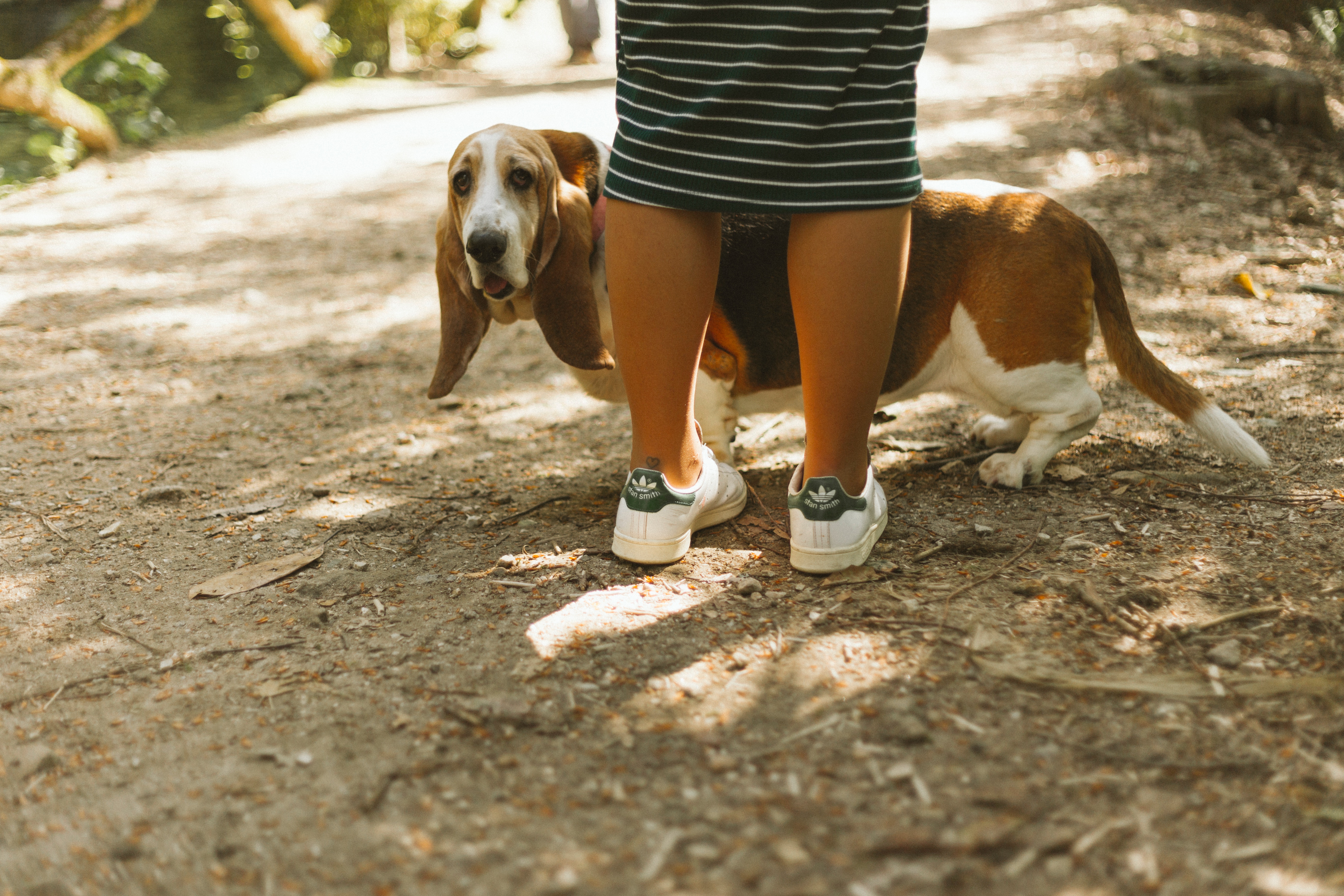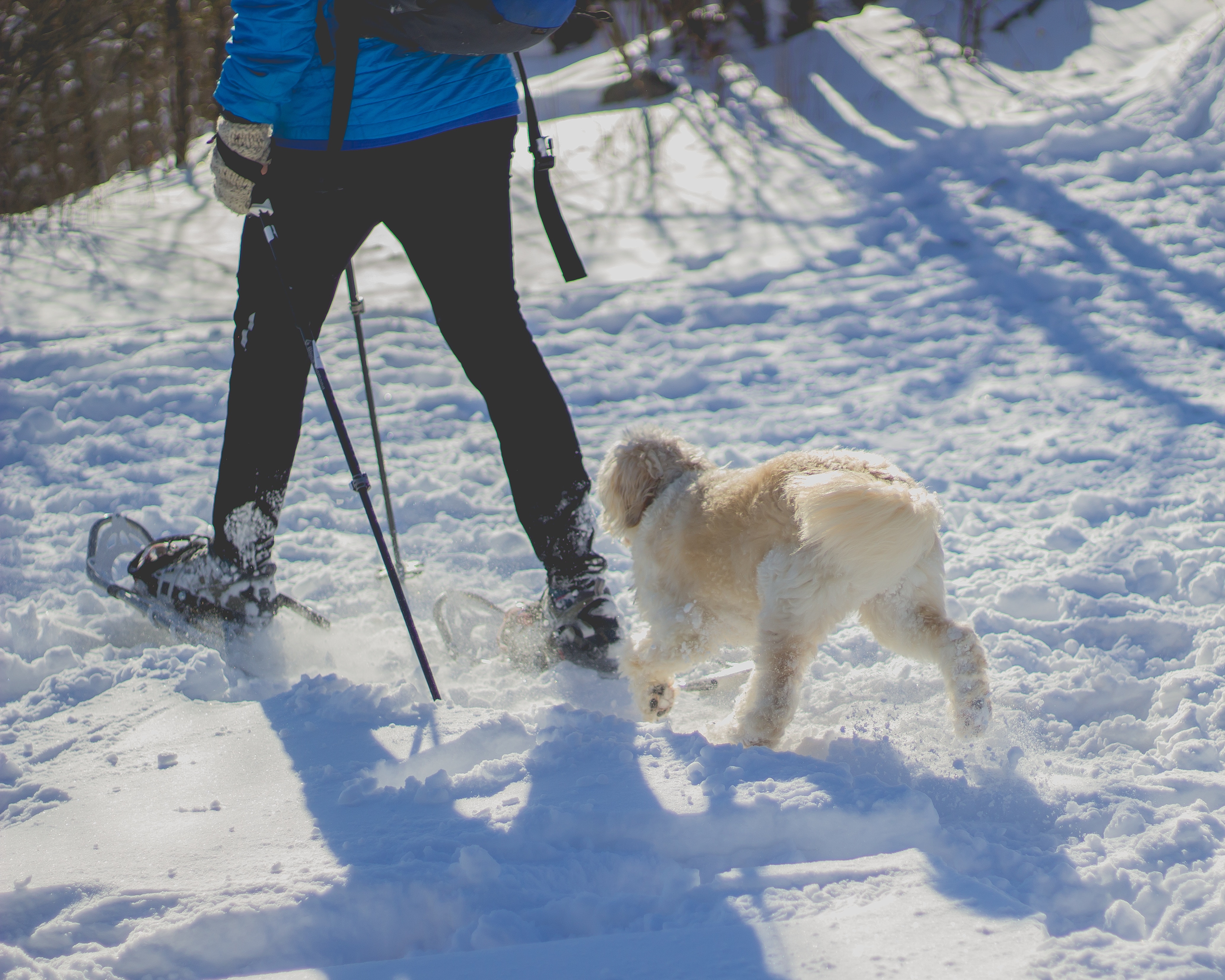What does it mean for your dog to heel? “Heel” is a command that keeps your dog glued to your side whether you are on the go or standing still. The primary intent of the heel command is to keep your dog’s attention completely fixed on you. “Heel” is a fantastic command because it has applications on and off leash. Training your dog to heel can be useful on busy streets or new areas where dogs are allowed to be off-leash. This technique is especially useful when training a service dog as well. On top of keeping your dog physically engaged, training your dog to heel keeps your dog mentally engaged as well.
This article will teach you everything you need to know to train a dog to heel. By following these steps, you’ll be able to teach your furry companion a variety of useful commands.
How to Use the Heel Command Properly
 The command heel should not be abused or overused. This command takes a very specific amount of focus and requires a heightened sense of awareness on the part of your dog and is therefore mentally taxing. “Heel” should be reserved for circumstances where your dog is required to be on their best behavior. As a result, “heel” shouldn’t be used on regular everyday walks or playing in the yard, unless there is a particular circumstance. Remember that your dog learns about his environment by exploring, so allowing your dog to be curious and roam around is an integral part of his development process.
The command heel should not be abused or overused. This command takes a very specific amount of focus and requires a heightened sense of awareness on the part of your dog and is therefore mentally taxing. “Heel” should be reserved for circumstances where your dog is required to be on their best behavior. As a result, “heel” shouldn’t be used on regular everyday walks or playing in the yard, unless there is a particular circumstance. Remember that your dog learns about his environment by exploring, so allowing your dog to be curious and roam around is an integral part of his development process.
Training Exercise 1: Stationary Eye Contact
For this training exercise, some kind of edible treat is best, though you can use a clicker for dogs if you prefer that method. To begin, move your hand around and make sure that the dog will stay engaged with the treat and follow your hand. Then tell the dog to sit. After the dog makes eye contact with you, give the dog a treat. Repeat this process a few times to establish that the dog is now in training and to reinforce that good behavior will be rewarded.
Training Exercise 2: Learning to heel
Once your dog is used to following your hand and then sitting and making eye contact, it is time to start training your dog to heel. A proper heel is where your dog stays on your left side, but you can determine which side is best for you. For simplicity, this article will be referring to the left side. For a stationary heel, your dog should be on your left side sitting down and looking up at you. It is important to use the word heel in a calm and steady tone. This tells your dog that you are in control and that what you are saying is directed at him.
Begin in the same way you did last time by showing the dog the treat and then moving your hand around and having him follow the treat. Bring your hand around the back of you, this part is vital, you must make the dog go around your backside to the side you are training them to heel on, in this case, our left. Bring the dog around your back by luring them with the treat and then stop your hand at your left leg and say “heel.” If the dog stops and looks up at you, then you may reward him with a treat and words of positive affirmation like “good boy.”
Bringing your dog around your backside and onto your left leg is how you reset. If your dog ever slips up or does not execute a proper heel, it is crucial that you reset. You want your dog facing forward but looking up at you. Do not reward bad posture or anything that could reinforce bad habits. It is important for the dog to be stationary and focused on you.
Training Exercise 3: The walking heel
 Once you have gotten the hang of a stationary heel, you can begin working on a moving heel. This may take a little more practice, and the reward system is based on the dog staying with you rather than following a direct command. However, it is crucial to repeat the command of heel constantly and then reward your dog if he stays right at your side. You could be rewarding your dog every couple of steps so long as your dog is moving forward with his focus on you right after you say the words heel. Again, if your dog walks in front of you or loses focus, it is essential to reset by bringing the dog around your back and onto your left leg. Once a seated heel has been reestablished, you may begin a moving heel once again.
Once you have gotten the hang of a stationary heel, you can begin working on a moving heel. This may take a little more practice, and the reward system is based on the dog staying with you rather than following a direct command. However, it is crucial to repeat the command of heel constantly and then reward your dog if he stays right at your side. You could be rewarding your dog every couple of steps so long as your dog is moving forward with his focus on you right after you say the words heel. Again, if your dog walks in front of you or loses focus, it is essential to reset by bringing the dog around your back and onto your left leg. Once a seated heel has been reestablished, you may begin a moving heel once again.
As with everything in life, practice makes perfect. You want to work on training your dog to heel in lots of different situations. Whenever you decide to practice training your dog to heel, make sure you are equipped with ample rewards and work for an extended period. Training your dog to heel is a dedicated practice that is sure to yield an attentive and obedient dog!
Sources:
“How to Teach Your Dog to Sit.” Canna-Pet, 14 June 2017, canna-pet.com/teach-dog-sit/.
“How to Train a Dog With a Clicker | Canna-Pet®.” Canna, 17 Aug. 2018, canna-pet.com/how-to-train-a-dog-with-a-clicker/.
“How to Train a Service Dog.” Canna-Pet, 13 Aug. 2018, canna-pet.com/how-to-train-a-service-dog/.
Revolution, Zak George’s Dog Training. “How To Teach Your Puppy to Heel.” YouTube, 18 Feb. 2017, www.youtube.com/watch?v=eP3l9ouRnl8.
“How to Train a Dog to ‘Heel’ (K9-1.Com).” YouTube, 23 Dec. 2013, www.youtube.com/watch?v=u9cpD6VFhTU.




